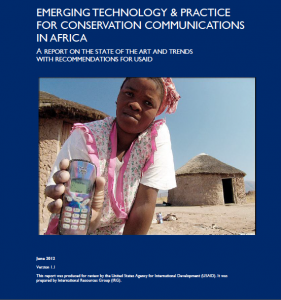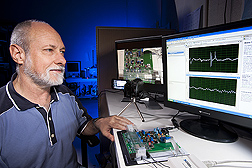
Credit: Farm Africa
After two decades of civil war and amid a tense truce, the world recently welcomed its newest nation, The Republic of South Sudan. But like many of its Sub-Saharan neighbors did 50 years ago, South Sudan joins the rank of nationhood with a raft of intractable developmental challenges– and the high expectations of 8 million people adds importance to each.
While the slate of challenges at hand are all important for sustained socio-economic development, achieving national food security will be key to the success of the nation. It is a vital part of national security and nationhood. But achieving self-sufficiency in food production and food security will require full transformation of the embryonic nation’s agricultural sector.
Although the sector accounts for the majority of economic activity—33% of the rural population lives on agriculture, whereas 45 % and 12 % are agro-pastoralists and fishermen respectively—the industry is stuck in a pre-industrial form. This is particularly bothersome as new nations must effectively manage their citizens’ expectations–for basic services, jobs and food–to thrive.
However, the country has been unable to provide enough food for the people of South Sudan since the signing of the Comprehensive Peace Agreement (CPA) in 2005. More than a fifth of the population depends on food aid, and the majority of the country’s food is imported from neighbouring countries, many of which are unstable. This doesn’t bode well for the country, and begs the question: where is the national food policy that would foster sustained food production and security? What should a national food policy for South Sudan entail?

Credit: South Sudan Forum For Public Policy
As I noted earlier, at the heart of any food policy must be the repositioning of the agricultural sector. South Sudan’s agriculture is characterized by subsistence farmers and disproportionate involvement in agriculture and forestry, compared to livestock and fisheries. There ought to be a concerted campaign to educate farmers about the importance of diversifying their crops and exploring opportunities in the livestock and fisheries sector.
This will require the bridging of the information divide. In other words, South Sudanese farmers ought to have improved access to better extension services and information that will sensitize and inform them about markets. ICTs will be useful tools for enabling this and should therefore form a central part of the overall food security strategy for South Sudan. However, the full incorporation of ICTs will depend on improvements in connectivity and access– mobile subscription, broadband access and total internet users are all less than the average for Sub-Saharan Africa.
Nonetheless, traditional ICTs such as radio, which is relatively ubiquitous in South Sudan, may be used as a key first step to offer extension services that tackle issues, including irrigation cycles, pest control, access to seeds, fertilizer, transportation and prices. These services may be provided via a series of regularly aired radio programs and features that capture the voices and interests of the farmers. The use of traditional ICTs and other less advanced but newer technologies are likely to be more contextually relevant and appropriate, compared to high end ICTs. The latest technology is not always suitable. In the long-term, many opportunities to use the latest ICTs will mature. That is to say, they exist now, but the infrastructure in not in place to facilitate their effective implementation for the benefit of the majority.
Here are a few of the ICT opportunities:
- The provision of access to financial services via mobile money
- Improve irrigation and water management services using remote sensing technologies and GIS
- Establishment of legible rural and agricultural markets through market information systems
- Reduction of waste through proper storage and transportation facilities enabled by logistics technology
- Text and other mobile-based extension services to create access to better agriculture and livestock inputs
Despite the immense scope for growth in South Sudan’s agriculture sector, much depends on the development of indigenous agricultural and livestock research, animal health services, infrastructure (including roads and bridges), and the stability of the regulatory and political environment.








































